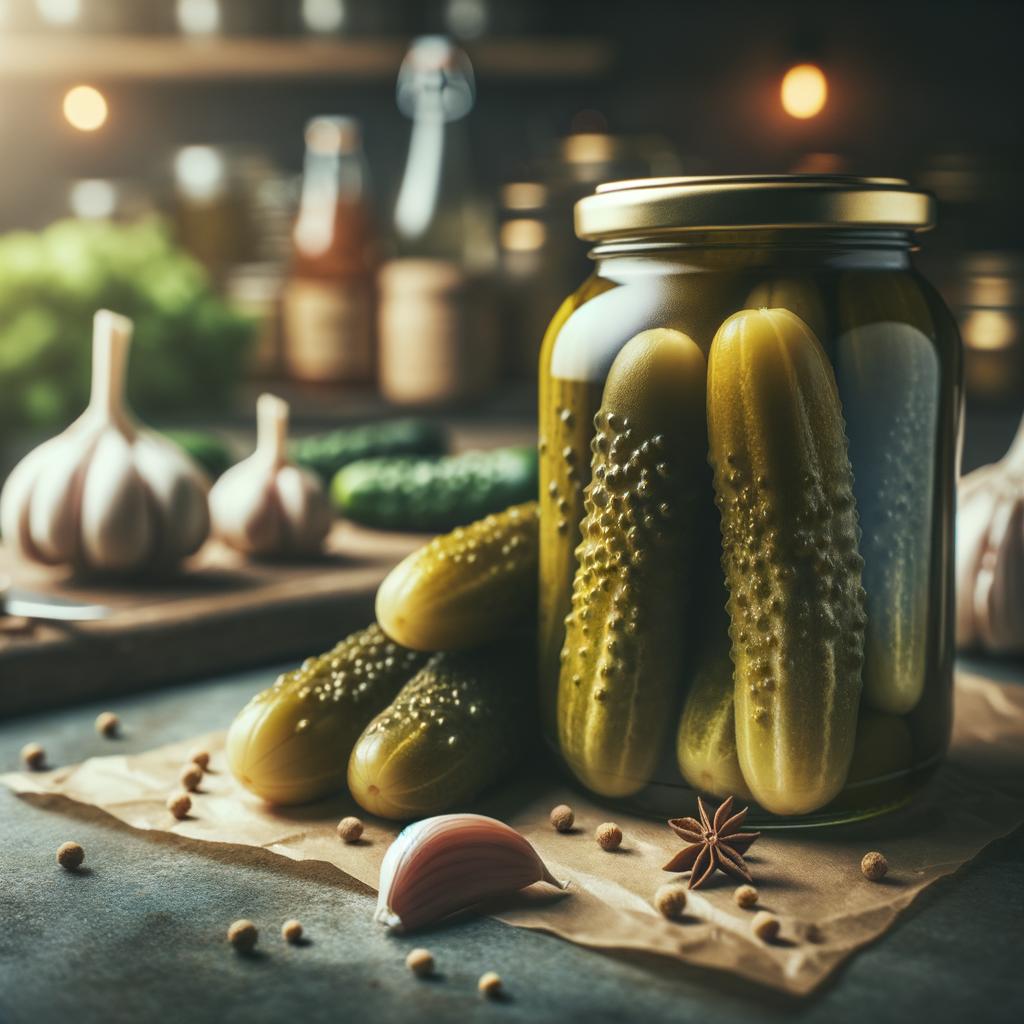Pickled Gherkins

Description Meet the pickled gherkin, a delightful culinary gem that is as charming as it is versatile. These petite cucumbers, usually no longer than 3 inches, are bathed in a brine of vinegar, sugar, and a symphony of spices, resulting in a tangy, sweet, and slightly crunchy treat. Their vibrant green hue, speckled with tiny white seeds, is a feast for the eyes, while their crisp texture and tart flavor profile make them a delight to the palate. What sets the pickled gherkin apart from its fellow pickled brethren is its unique blend of sweetness and acidity, making it a versatile ingredient that can complement a wide array of dishes.
Primary Uses Pickled gherkins are a beloved ingredient in numerous cuisines around the world. They are a staple in Eastern European cuisine, often served alongside hearty dishes like sausages and sauerkraut. In the United States, they are a key component of classic sandwiches like the Reuben and the Cuban. They also make a delightful addition to salads, providing a pop of color and a burst of flavor. Beyond their culinary uses, pickled gherkins also have a place in folk remedies, with some cultures using them as a natural remedy for muscle cramps and dehydration.
History The pickled gherkin has a rich and intriguing history. Its origins can be traced back to ancient Mesopotamia, where cucumbers were first pickled. The tradition was carried on by the Greeks and Romans, who valued the pickled gherkin for its ability to preserve the cucumber's freshness. The practice of pickling gherkins spread throughout Europe during the Middle Ages, and by the 17th century, it had become a popular delicacy in England. The pickled gherkin's journey to America came with early settlers, where its popularity has only grown over time. There's a delightful myth that Napoleon Bonaparte himself was a fan of pickled gherkins, believing that they provided his troops with strength and vitality.
Nutritional Information Despite their small size, pickled gherkins pack a nutritional punch. They are low in calories and fat, making them a healthy addition to any diet. They also contain a good amount of vitamin K, which is essential for bone health. Additionally, the pickling process increases the bioavailability of antioxidants found in cucumbers, enhancing their health benefits. However, pickled gherkins are high in sodium, so they should be consumed in moderation, especially by those monitoring their salt intake. Compared to other pickled vegetables, gherkins stand out for their lower calorie content and their unique blend of vitamins and minerals.
The pickled gherkin is more than just a food ingredient. It's a testament to the ingenuity of our culinary ancestors, a delightful blend of flavors, and a nutritional powerhouse, all wrapped up in a charming, bite-sized package.

